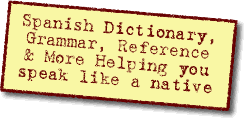|
#1

February 09, 2009, 07:01 PM
|
 |
...
|
|
Join Date: Jun 2008
Location: PA
Posts: 8,187
Native Language: English, Chinese
|
|
 Labor-Management Relations
Labor-Management Relations
Labor-Management Relations
Early labor unions had a difficult time achieving their goals of higher pay, shorter hours, and improved working conditions. Factory owners were strongly against the formation of unions. They pressured the government to pass laws which restricted union activities. Federal troops were sometimes used to forcefully end strikes. The courts usually sided with the factory owners and ordered striking employees back to work. Workers at a factory who tried to start a union were regarded as troublemakers, and were often dismissed from their job.
Most early unions, including the Knights of Labor, failed to make significant gains and eventually disappeared. But the American Federation of Labor attracted large numbers of workers and made important progress toward its goals.
As unions grew in strength, labor (the workers) and management (the factory owners) used different tactics against each other. Some of the terms in the following list refer to measures taken by labor to put pressure on management. Others represent tactics used by management to limit the power and success of the unions. Two terms in the list refer to methods used to settle differences between the two sides. Fill in the space with the appropriate answers.
Please check my answers. Thanks in advance.
|
|
V
(1) management: Names of union activists are put on a blacklist and given to employers who refuse to hire them.
(2) management: During a lockout, the factory is closed in order to force workers to give up their demands.
(3) labor: People walking in a picket line outside of the factory carry signs that call attention to a labor dispute, and sibourage others from entering the plant.
(4) management: A worker signs a "yellow-dog" contract in which he agrees not to join a union.
(5) settle differences: Representatives of labor and management discuss the terms of a new contract during a collective bargaining session.
(6) labor: Only union members may be hired at a closed shop.
(7) labor: At a union shop, the factory owner can hire nonunion workers only if they agree to join the union within a certain period of time.
(8) labor?: Factory owners can hire nonunion workers as well as union members at an open shop.
(9) labor: Employees refuse to work during a strike because their demands have not been met.
(10) settle differences: A fair-minded third party, through the process of arbitration, hears both labor and management in a dispute, then recommends an agreement.
(11) management: A court order, called an injunction, can be used to prohibit a strike or to order strikers back to work.
(12) management: During a boycott, consumers are urged not to buy goods for a company involved in a labor dispute.
(13) management: Scabs were hired to replace employees who went on strike.
I hope you understand.....:P
Last edited by Jessica; February 09, 2009 at 07:14 PM.
|











